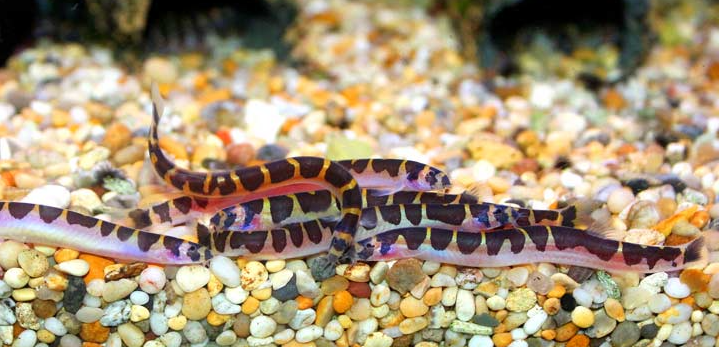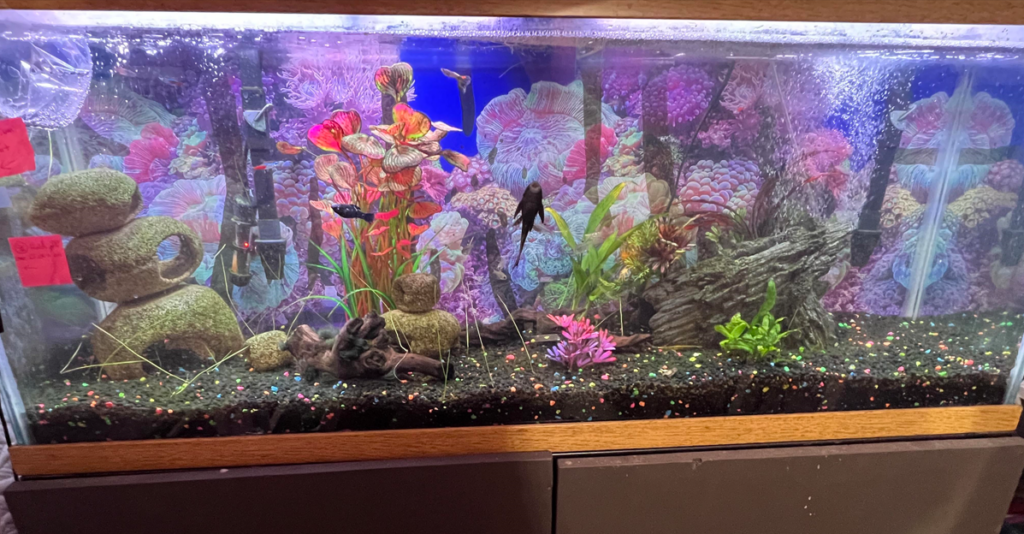Kuhli loaches, with their slender bodies and playful demeanor, captivate the hearts of aquarium enthusiasts worldwide. In this insightful exploration, we delve into the ideal group size for Kuhli loaches and the rationale behind it, shedding light on how to foster their well-being and happiness in your aquarium habitat.

Kuhli loaches are fascinating and popular aquarium fish known for their slender body and playful nature. If you are considering adding these delightful creatures to your aquarium, you may be wondering how many should be kept together to ensure their well-being and happiness. In this article, we will explore the ideal group size for Kuhli loaches and the reasons behind it.
Introduction to Kuhli Loaches
Kuhli loaches, also known as Pangio kuhli, originate from Southeast Asia, particularly Indonesia and Malaysia. They are known for their eel-like appearance and peaceful temperament, making them a wonderful addition to community aquariums.
These loaches typically grow to a size of three to four inches, which means they have a relatively low bioload. This characteristic is important to consider when determining the appropriate group size for these fish.
In their natural habitat, Kuhli loaches are social creatures that prefer to live in groups. They can often be found burrowing in the substrate and exploring their surroundings together. When kept in proper group sizes, they exhibit more natural behaviors and feel safer, resulting in a more active and engaging aquarium experience.

Factors to Consider for Group Size
Several factors should be taken into account when deciding on the number of Kuhli loaches to keep together:
Tank size and space requirements
Kuhli loaches require adequate swimming space and hiding spots. It is recommended to provide a tank size of at least 20 gallons or larger for a small group of three to six individuals, as this allows them to move freely and establish territories.
Compatibility with other tankmates
Kuhli loaches are generally peaceful and get along well with most community fish. However, it is essential to consider the temperament and compatibility of other fish species in the tank. Avoid aggressive or overly active species that may harass or outcompete the loaches for food and resources.
Consideration of gender ratios
When keeping Kuhli loaches, it is beneficial to maintain a balance between males and females. An even ratio of males to females promotes natural behaviors and reduces any potential aggression among males competing for mates.

Recommended Group Size for Kuhli Loaches
For optimal well-being and social interactions, it is recommended to keep a minimum group size of three to six Kuhli loaches in a 20-gallon tank or larger. This size allows the loaches to feel secure and encourages their natural behavior patterns.
However, larger group sizes can be even more beneficial. A larger group provides increased comfort, reduces stress levels, and enhances their overall activity levels. Therefore, if you have the available space, consider keeping a larger group of Kuhli loaches, such as eight or more individuals.
Benefits of Keeping Kuhli Loaches in Proper Group Sizes
Maintaining Kuhli loaches in proper group sizes offers a range of benefits:
Stress reduction and increased activity levels
By keeping Kuhli loaches in a group, they feel more secure and experience less stress. This allows them to exhibit their natural behaviors, such as burrowing, exploring, and schooling. Increased activity levels provide a more dynamic and visually appealing aquarium display.
Natural exploration and feeding behaviors
Kuhli loaches are known for their curious nature and kuhli loache love to forage for food. When kept in a group, they are more likely to engage in natural feeding behaviors, such as sifting through the substrate in search of small invertebrates and leftover food particles. Observing these behaviors is not only fascinating but also contributes to their overall well-being.

Potential Issues with Incorrect Group Sizes
Keeping Kuhli loaches in inadequate group sizes can lead to several issues:
Increased stress and behavioral problems
Isolating Kuhli loaches or keeping them in small groups can cause stress and anxiety. This may manifest in behaviors such as hiding excessively, loss of appetite, or increased aggression towards tankmates.
Lack of natural behaviors and potential health issues
When kept in improper group sizes, Kuhli loaches may exhibit abnormal behaviors or become inactive. They may also become more susceptible to diseases and illnesses due to stress and weakened immune systems.
General Guidelines for Keeping Kuhli Loaches Together
Here are some tips to ensure a harmonious group dynamic when keeping Kuhli loaches:
Tips for introducing new Kuhli Loaches to an existing group
If adding new Kuhli loaches to an established group, it is essential to acclimate them properly. Float the new fish in the tank to match the water temperature, then slowly introduce them using a quarantine container to prevent aggression or territorial disputes.
Maintenance and care practices
Regular maintenance practices, such as water changes, substrate cleaning, and providing a varied diet, help create a healthy and thriving environment for Kuhli loaches. Additionally, maintaining good water quality and temperature stability promotes their overall well-being.
For More Information on caring for Kuhli, from optimal tank conditions to much more, check out our article:
The Kuhli Loach: A Fascinating Nocturnal Bottom-Dweller De-Mystified
Ideal Tank Mates for Kuhli Loaches: Creating a Harmonious Freshwater Aquarium
Kuhli Loaches, including the striking black Kuhli Loach variant, are a fascinating addition to any freshwater fish tank, known for their unique appearance and peaceful demeanor. Kuhli loach lifespan that can extend several years, adult Kuhli Loaches, particularly the female Kuhli Loaches, exhibit a slightly fuller body shape, making them distinguishable.
These bottom-dwellers thrive in well-established tanks with soft substrates and plenty of hiding spots, simulating their natural habitat. They particularly love feasting on small, nutritious foods like freshly hatched brine shrimp, which is essential for their diet.

When considering tank mates for Kuhli Loaches, it’s crucial to choose other peaceful fish that won’t outcompete them for food or territory. Ideal companions include other schooling fish that occupy the middle to upper levels of the water column, ensuring the Kuhli Loaches can roam the bottom peacefully.
Since Kuhli Loaches enjoy the company of their kind, adding more Kuhli Loaches to the tank can encourage natural behavior and reduce stress, allowing their personalities to shine.
For those interested in a slightly different look, the Leopard Loach can be a visually appealing companion that shares similar care requirements. Overall, when selecting tank mates, ensuring a harmonious balance and considering the adult Kuhli Loach size (up to 4 inches) are key to creating a thriving community aquarium where Kuhli Loaches and their companions can coexist peacefully.
Conclusion
Kuhli loaches thrive when kept in proper group sizes, allowing them to exhibit their natural behaviors and feel secure in the aquarium, it also goes for blac kuhli loaches. A minimum of three to six individuals is recommended for a 20-gallon tank or larger, but larger groups can provide even more benefits. By considering the specific needs of these social creatures, you can create a thriving and engaging aquarium environment that will be a joy to observe.











